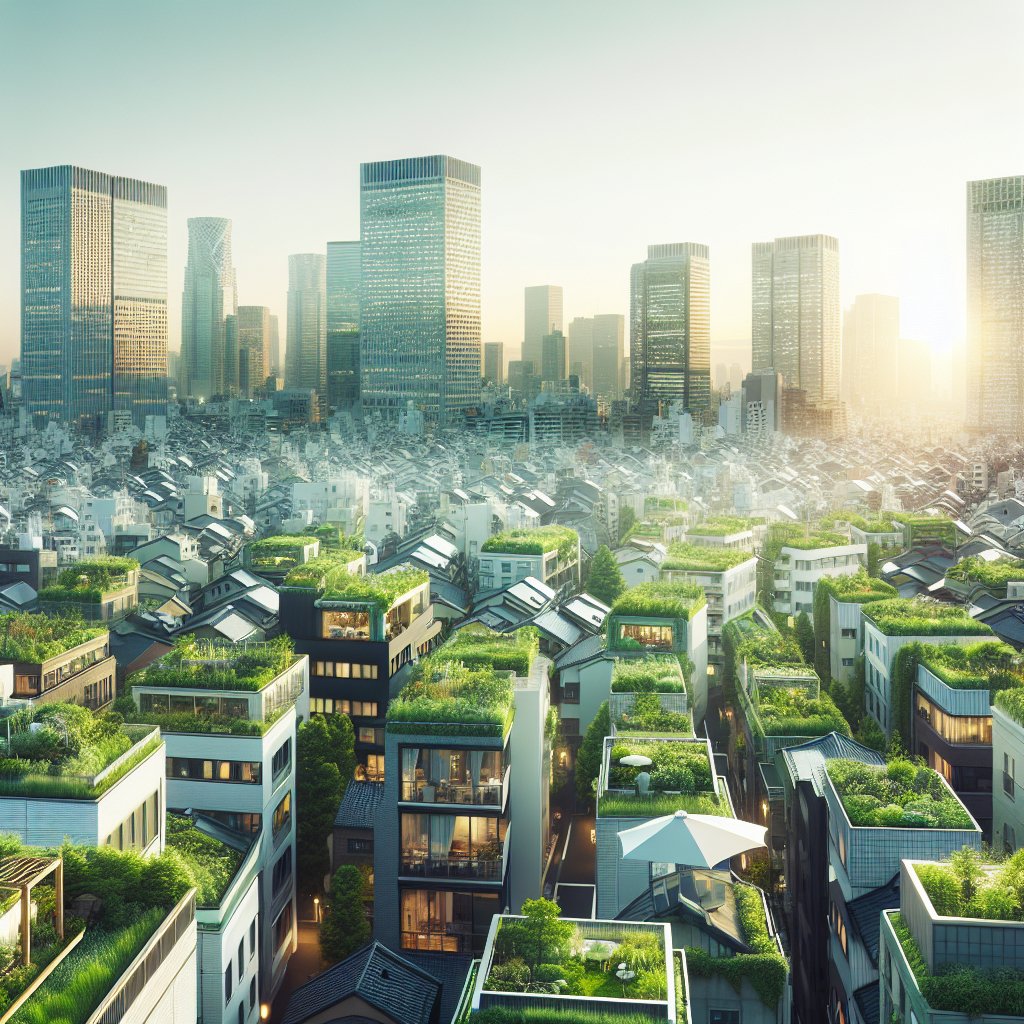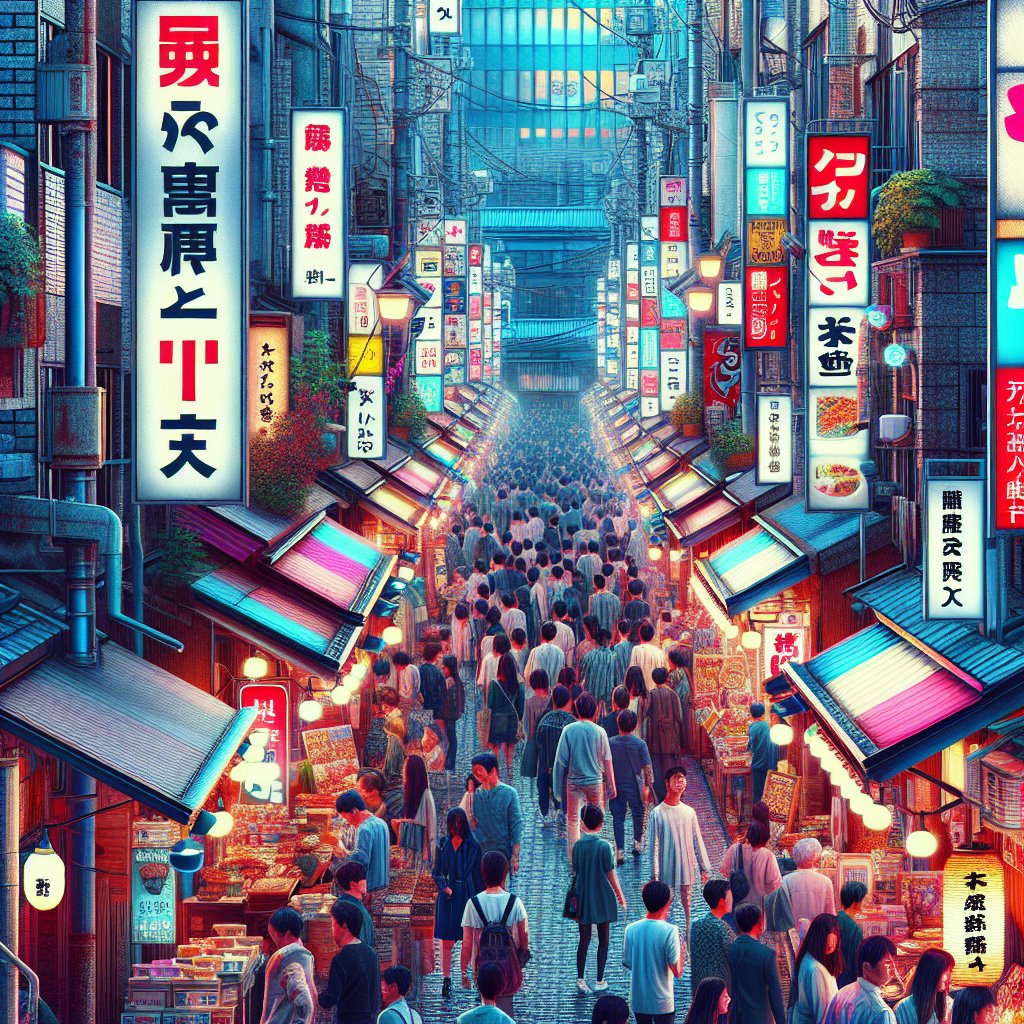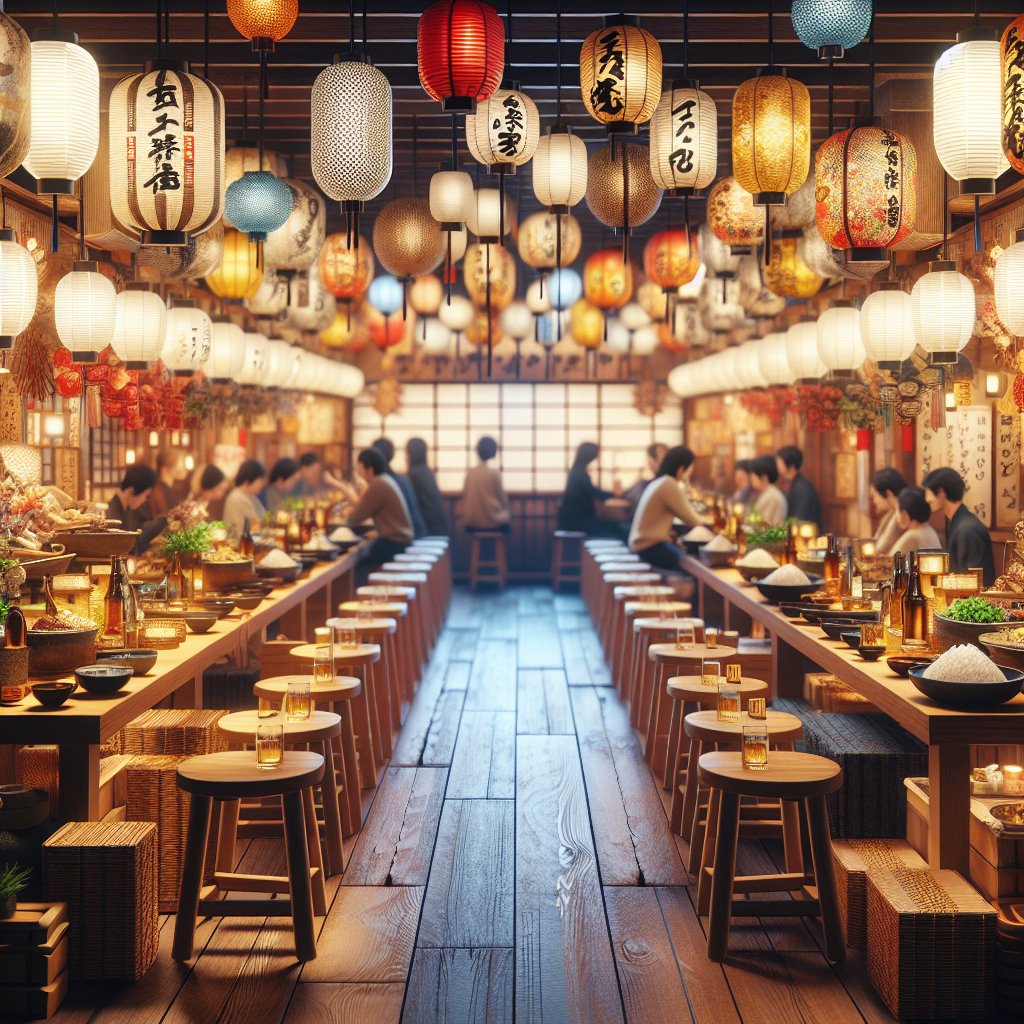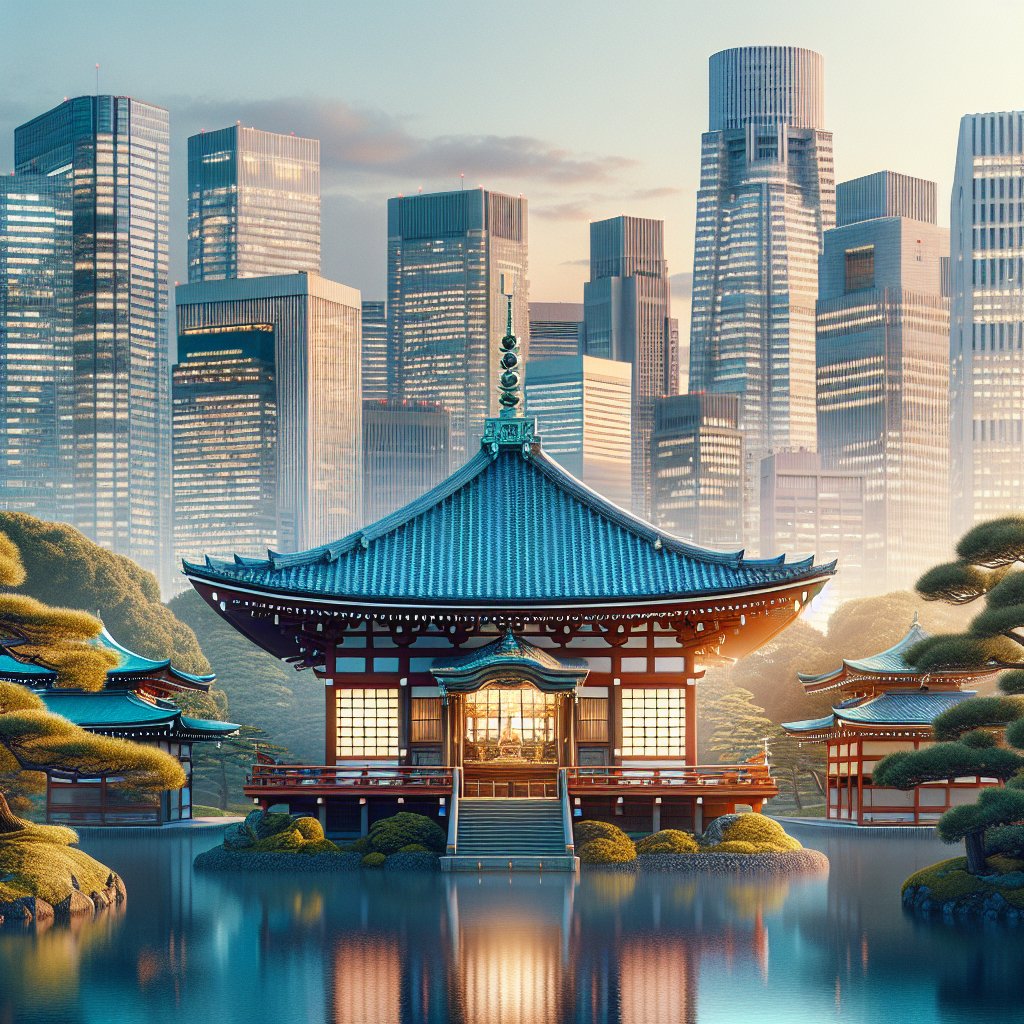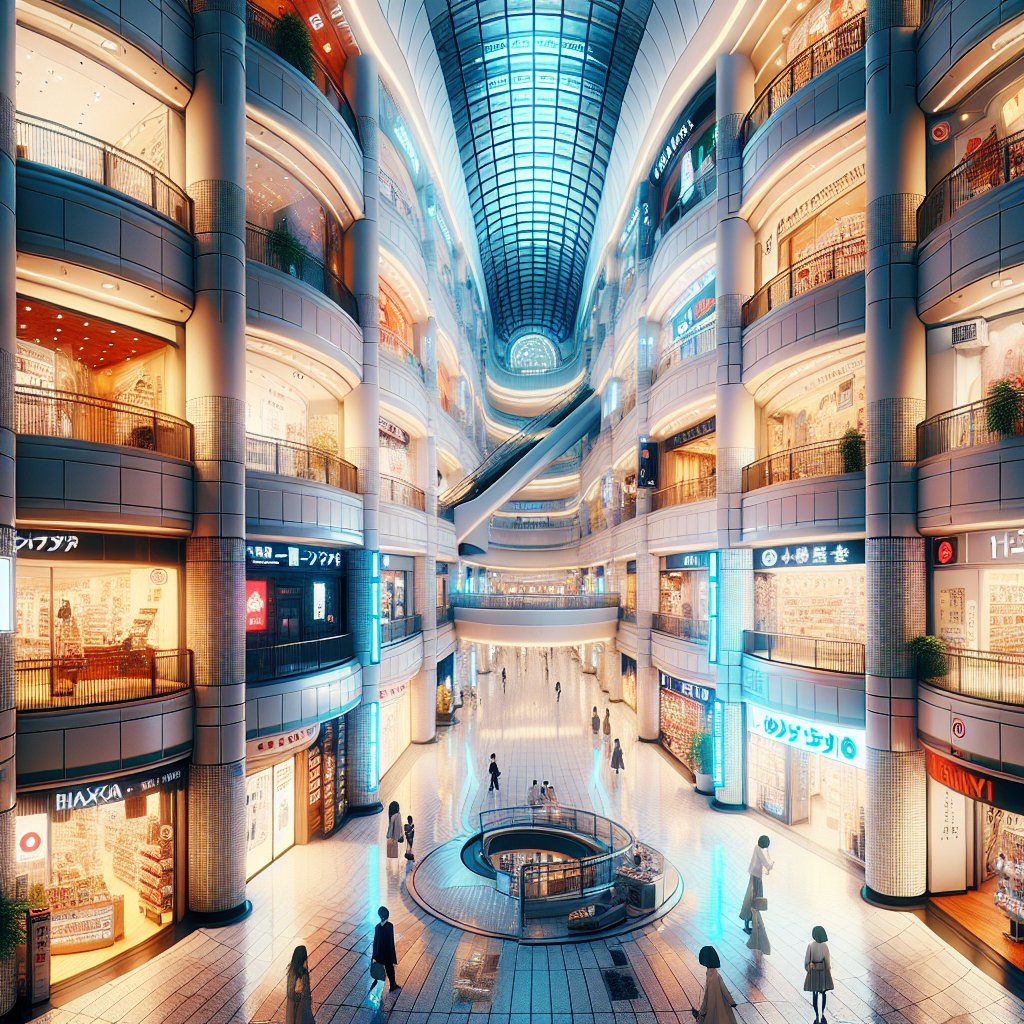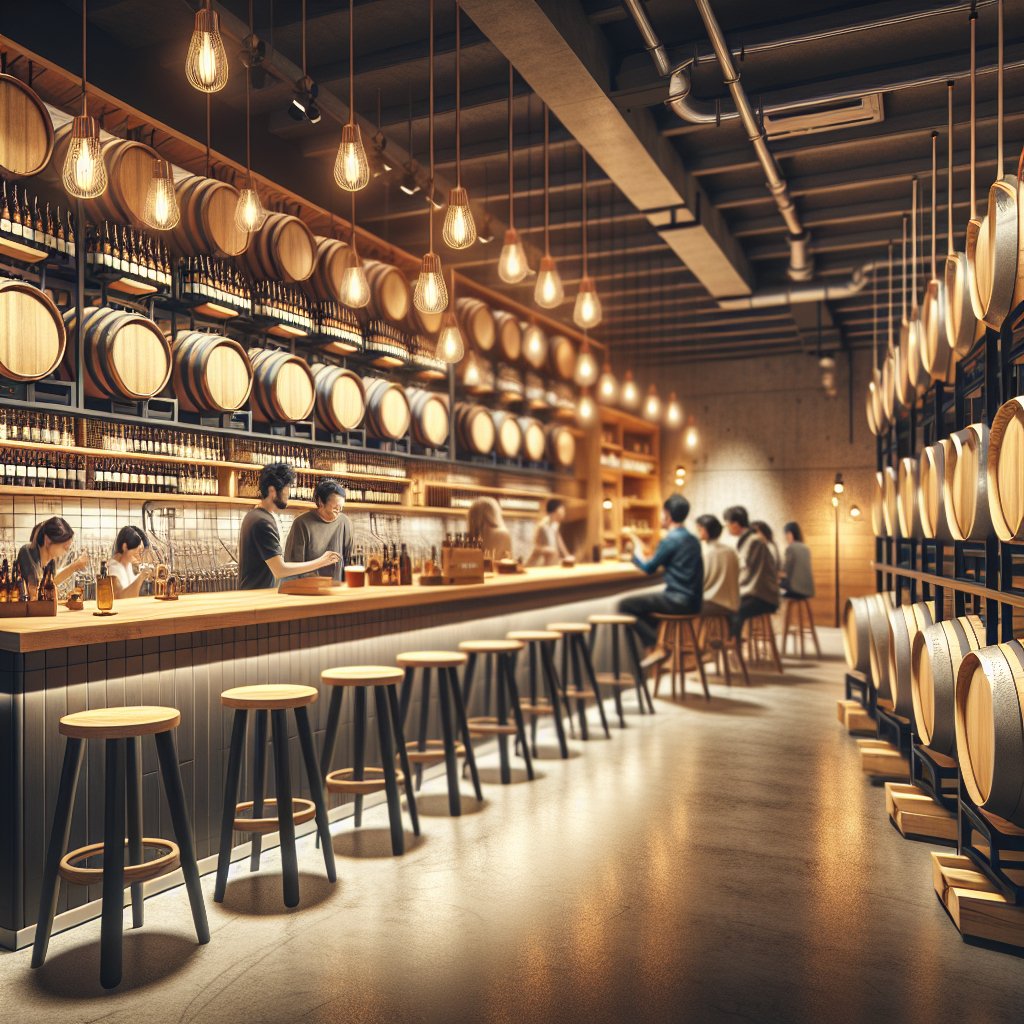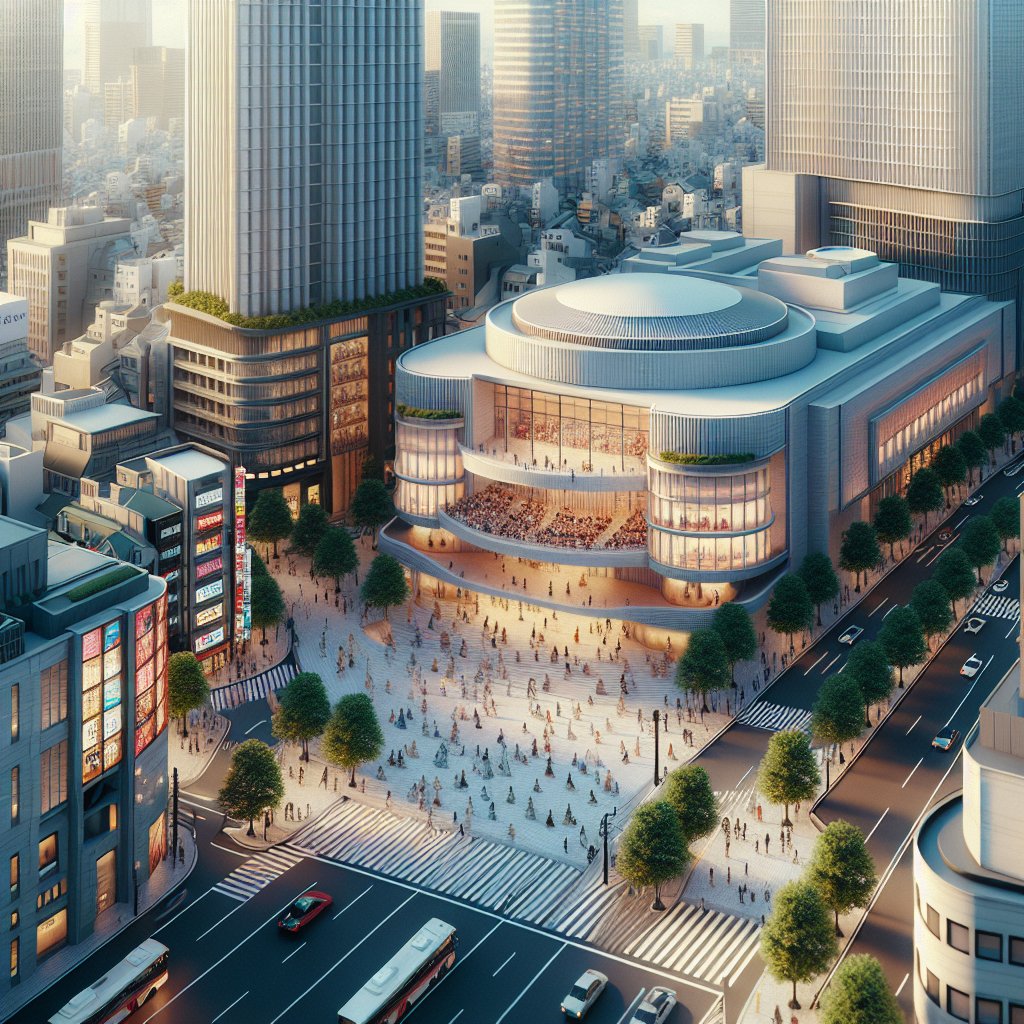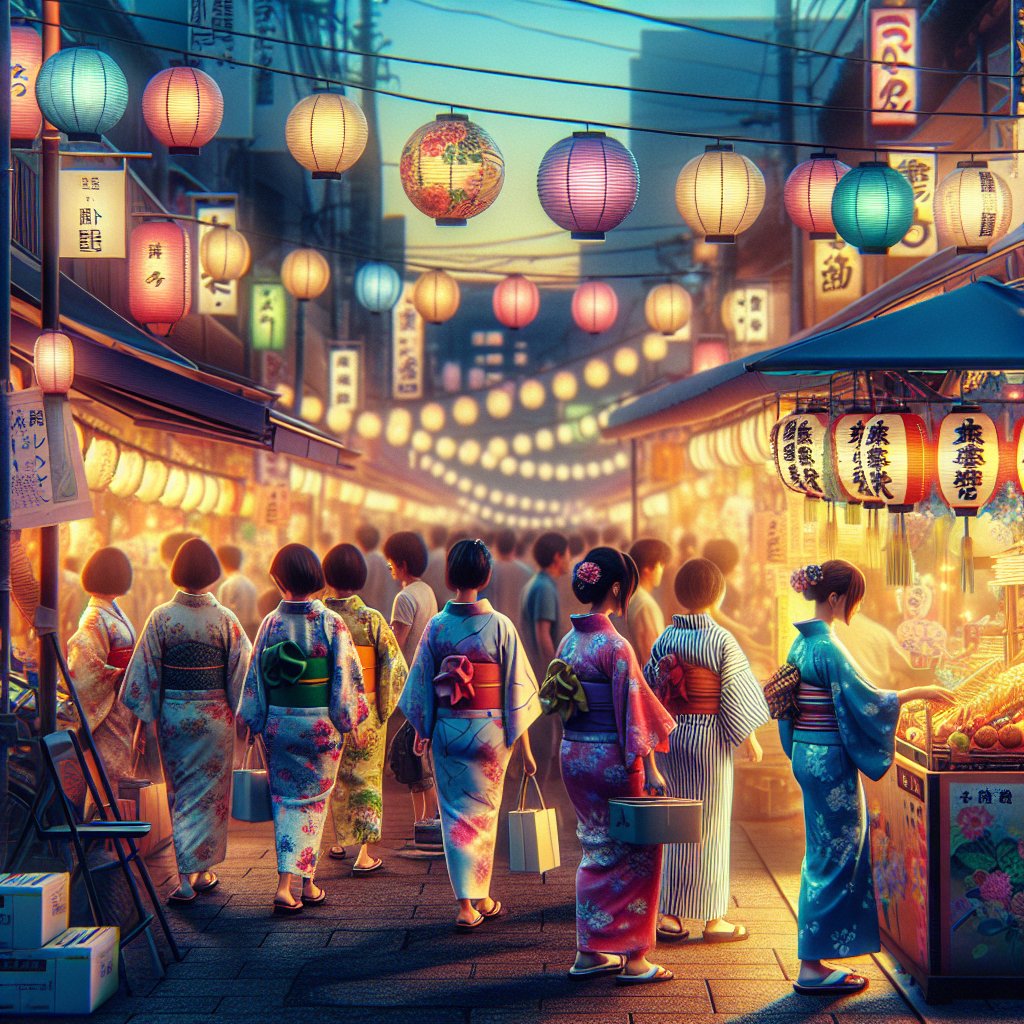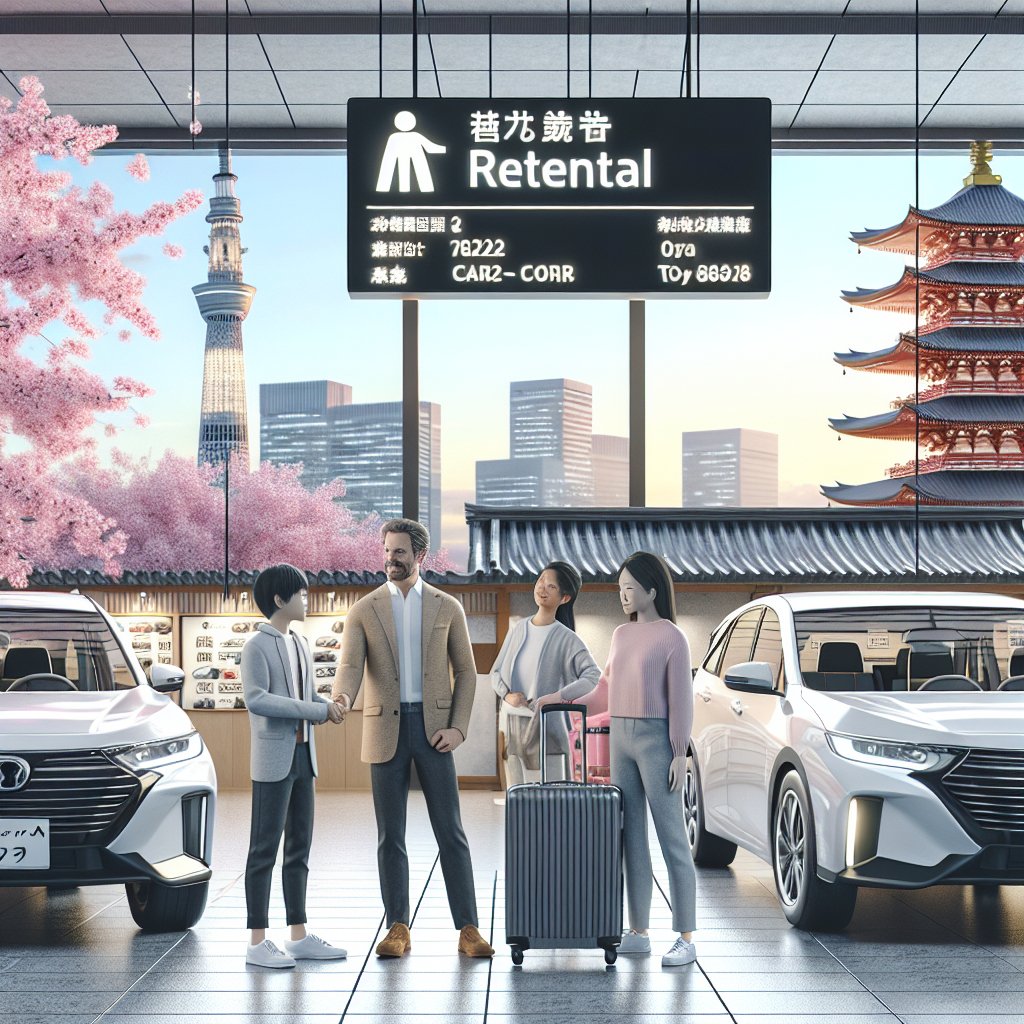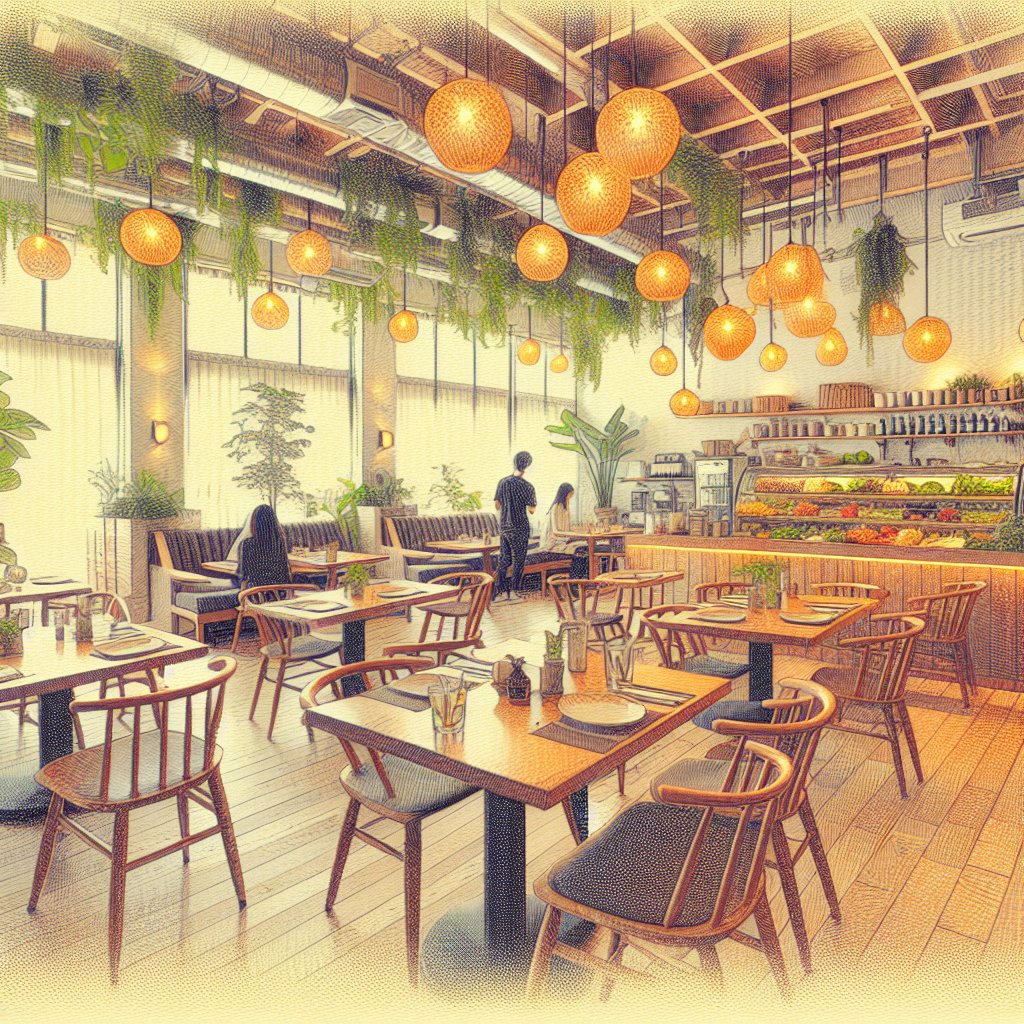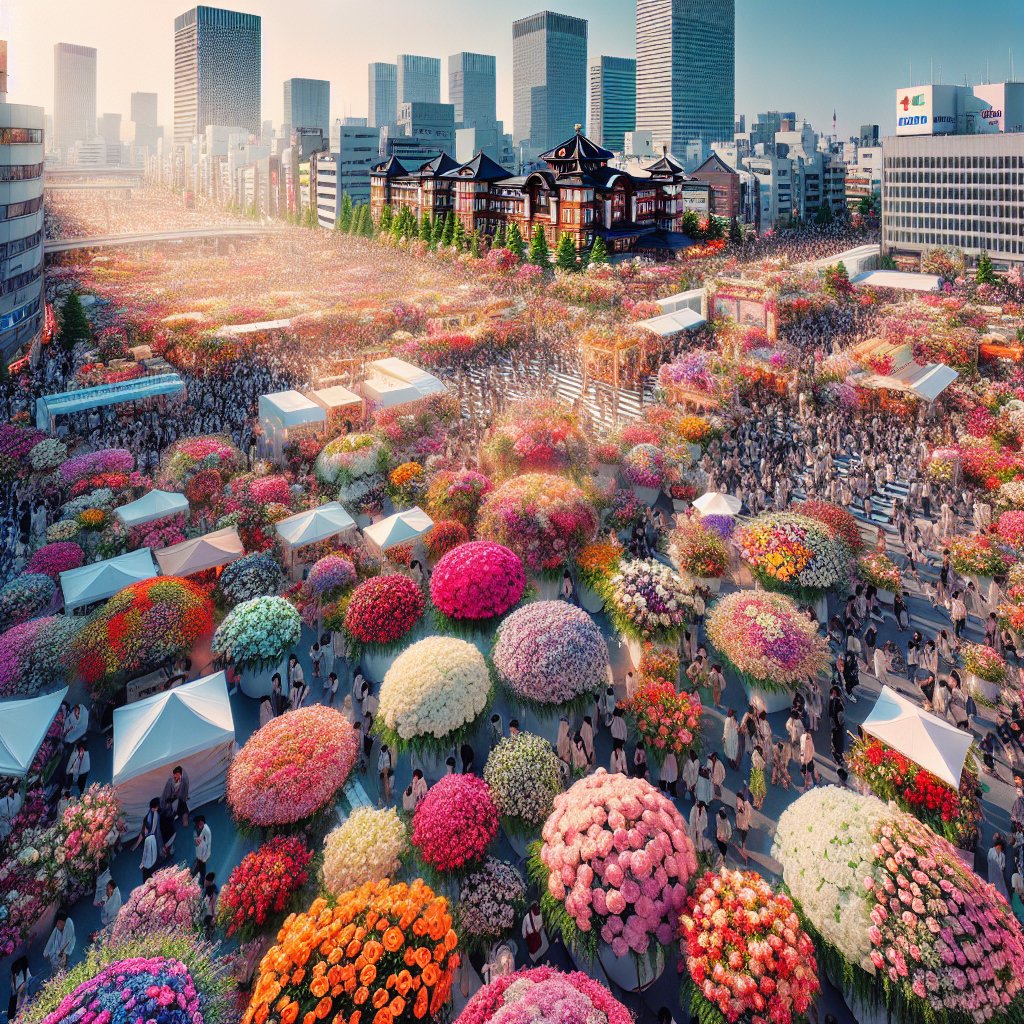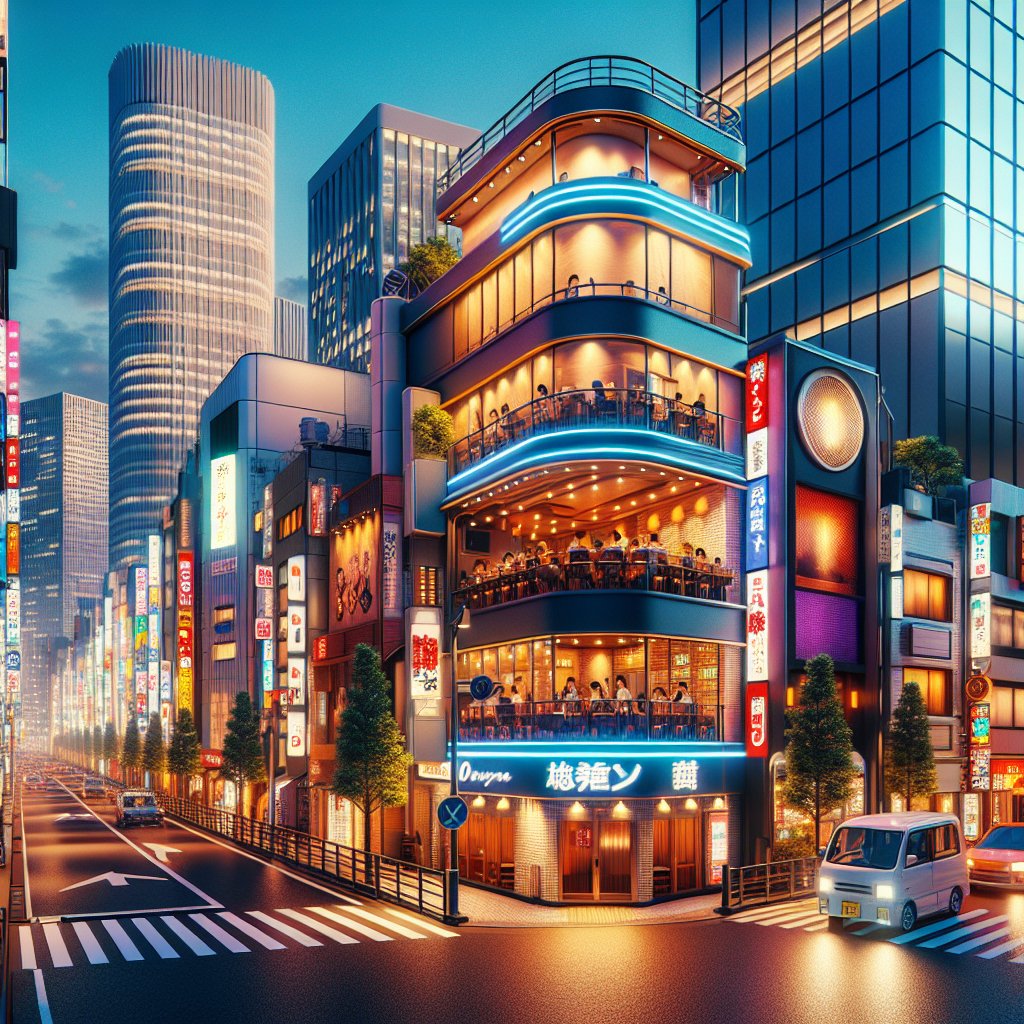Tokyo, the bustling capital of Japan, is a city that seamlessly blends tradition with cutting-edge modernity, and nowhere is this more evident than in its architecture. From towering skyscrapers to innovative public spaces, Tokyo’s modern architecture is a testament to the city’s forward-thinking spirit and its ability to adapt and evolve. This article delves into the fascinating world of Tokyo’s architectural landscape, exploring the iconic structures that define its skyline and the creative minds behind them.
The Evolution of Tokyo’s Skyline
Tokyo’s skyline is a dynamic tapestry of architectural styles, reflecting the city’s rapid growth and transformation over the decades. The post-war era marked a significant turning point for Tokyo, as the city embarked on a journey of reconstruction and modernization. The 1960s and 1970s saw the rise of the Metabolism movement, a radical architectural philosophy that envisioned cities as living, evolving organisms. This movement gave birth to some of Tokyo’s most iconic structures, such as the Nakagin Capsule Tower, designed by Kisho Kurokawa. This building, with its modular, prefabricated capsules, exemplifies the Metabolist vision of adaptable and sustainable urban living.
As Tokyo continued to grow, so did its architectural ambitions. The 1980s and 1990s were characterized by a wave of economic prosperity, leading to the construction of numerous high-rise buildings and commercial complexes. The Shinjuku district, in particular, became a symbol of Tokyo’s economic might, with its cluster of skyscrapers, including the Mode Gakuen Cocoon Tower and the Tokyo Metropolitan Government Building. These structures not only serve as functional spaces but also as landmarks that define the city’s identity.
Innovative Public Spaces and Cultural Hubs
While Tokyo is renowned for its towering skyscrapers, the city is also home to a plethora of innovative public spaces and cultural hubs that showcase the creativity and diversity of its architectural landscape. One such example is the Tokyo International Forum, a striking glass and steel structure designed by architect Rafael Viñoly. This multi-purpose complex hosts a variety of events, from concerts to exhibitions, and its distinctive ship-like design has made it a beloved landmark in the city.
Another notable example is the Asakusa Culture and Tourism Center, designed by Kengo Kuma. This building, located in the historic Asakusa district, serves as a gateway for tourists exploring the area. Its design, characterized by a series of stacked, wooden volumes, pays homage to traditional Japanese architecture while incorporating modern elements. This fusion of old and new is a recurring theme in Tokyo’s architectural landscape, reflecting the city’s respect for its cultural heritage and its embrace of innovation.
Tokyo’s commitment to creating vibrant public spaces is further exemplified by the redevelopment of the Marunouchi district. Once a business-centric area, Marunouchi has been transformed into a lively urban hub, with pedestrian-friendly streets, green spaces, and cultural venues. The Tokyo Station, a historic landmark in the district, has undergone extensive restoration, blending its original Meiji-era architecture with modern amenities. This revitalization project highlights Tokyo’s dedication to preserving its architectural heritage while adapting to the needs of a contemporary city.
The Architects Shaping Tokyo’s Future
Behind Tokyo’s architectural marvels are visionary architects who continue to push the boundaries of design and innovation. One of the most influential figures in contemporary Japanese architecture is Tadao Ando, known for his minimalist designs and use of natural materials. Ando’s work in Tokyo includes the Omotesando Hills, a luxury shopping complex that seamlessly integrates with the surrounding urban landscape. His designs emphasize harmony with nature, creating spaces that are both functional and aesthetically pleasing.
Another prominent architect shaping Tokyo’s skyline is Toyo Ito, whose work is characterized by fluid forms and innovative use of technology. Ito’s Sendai Mediatheque, although located outside Tokyo, has had a significant impact on architectural discourse in the city. The building’s transparent facade and flexible interior spaces challenge conventional notions of structure and function, inspiring a new generation of architects to explore unconventional design solutions.
Kengo Kuma, mentioned earlier for his work on the Asakusa Culture and Tourism Center, is also a key figure in Tokyo’s architectural scene. Kuma’s designs often incorporate natural materials and traditional Japanese techniques, creating spaces that are both modern and rooted in cultural heritage. His work on the National Stadium for the Tokyo 2020 Olympics is a testament to his ability to blend tradition with innovation, resulting in a structure that is both iconic and sustainable.
Challenges and Opportunities in Tokyo’s Architectural Landscape
As Tokyo continues to evolve, it faces a unique set of challenges and opportunities in its architectural landscape. One of the primary challenges is the need to balance urban development with environmental sustainability. Tokyo’s dense population and limited land resources necessitate innovative solutions to create livable, eco-friendly spaces. Architects and urban planners are increasingly focusing on green building practices, incorporating energy-efficient technologies and sustainable materials into their designs.
Another challenge is the preservation of Tokyo’s cultural heritage amidst rapid modernization. The city’s rich history is reflected in its traditional neighborhoods and historic landmarks, which are often at risk of being overshadowed by new developments. Efforts to preserve these cultural assets are crucial in maintaining Tokyo’s unique identity and ensuring that future generations can appreciate its architectural legacy.
Despite these challenges, Tokyo’s architectural landscape presents numerous opportunities for innovation and creativity. The city’s status as a global hub for technology and design attracts architects and designers from around the world, fostering a vibrant exchange of ideas and pushing the boundaries of what is possible in urban architecture. Tokyo’s commitment to hosting international events, such as the Olympics and World Expos, also provides a platform for showcasing cutting-edge architectural designs and sustainable urban solutions.
The Future of Tokyo’s Modern Architecture
Looking ahead, Tokyo’s modern architecture is poised to continue its trajectory of innovation and transformation. The city’s ongoing efforts to integrate technology and sustainability into its urban fabric will shape the future of its architectural landscape. Smart city initiatives, such as the development of intelligent transportation systems and energy-efficient infrastructure, will play a crucial role in enhancing the quality of life for Tokyo’s residents and visitors.
Furthermore, Tokyo’s architectural future will be influenced by the changing needs and preferences of its population. As the city grapples with an aging population and shifting demographics, architects and urban planners will need to design spaces that are inclusive and adaptable to diverse lifestyles. This may involve reimagining residential and public spaces to accommodate multi-generational living and promoting accessibility for all.
In conclusion, Tokyo’s modern architecture is a reflection of the city’s dynamic spirit and its ability to embrace change while honoring its cultural heritage. From iconic skyscrapers to innovative public spaces, Tokyo’s architectural landscape is a testament to the creativity and vision of the architects who shape it. As the city continues to evolve, its architecture will undoubtedly play a pivotal role in defining its identity and shaping its future.

